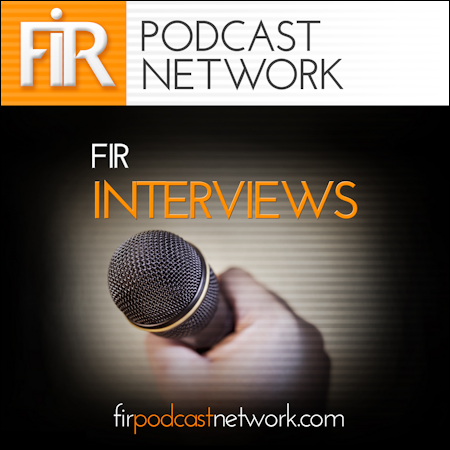
I remember when blogging first captured the attention and imaginations of early adopters and online adventurers in the early part of this century, not long after the dot-com bubble burst.
It was a time of discovery, learning new things and being part of something that was a great equalizer. For the first time, the Average Joe and Joanna could very easily and quickly have an unfiltered open voice on topics that might show up in online search results alongside other reports, narratives and opinions, typically from the mainstream media and big organizations, and expose their thinking and ideas to others anywhere in the world.
Other people might leave comments on your blog and recommend your posts to their friends and colleagues. In turn, they might repeat it. Soon, you might have a network of trusted, like-minded people who you get to know over time, from whom you glean insights into things that matter to you, and enrich your own thinking and ideas. You may become known as a subject-matter expert. And you might even change your own thinking; certainly, you’d likely be influenced by different opinions just as yours might influence others’ opinions.
I was one of those early adopters and online adventurers, someone who would evangelise this brave new world, wanting everyone to be a blogger especially people in business. Break down the barriers, I’d cry! Demolish the silos! Give everyone a chance to share their voice!
We quickly got what we wished for, didn’t we?
That same early-adopter spirit came to Twitter when it started up in 2006, gathering huge momentum in early 2007 at the South by Southwest festival that year. Not for nothing was Twitter called a “microblogging service” in its early days, a moniker that persisted over the course of the following years.
Today, a decade on, my question is – what is Twitter?
Many people I know say it’s a place to chat, share opinion, engage in conversation, meet new people, be authentic and transparent (be you, in other words). Some say it’s just a channel for others “to market at you.” And others see it only as a place where people shout about their own narrow interests, such as the cartoon clip above suggests in a benign example of that behaviour.
Twitter’s mission statement describes Twitter thus:
To give everyone the power to create and share ideas and information instantly, without barriers
A good way of saying what Twitter lets you do instead of what Twitter (subjectively) is.
I answer the question as I have many times previously: Twitter is whatever you want it to be.
Today, that means it’s probably nothing like you thought it was when you signed up in 2006 (as I did) or during the following year or so. Of course, that depends on why you signed up (personal, political or business reasons) and how you use the service.
I’m not a great chatter on Twitter, using it primarily as a means of bookmarking things that interest me that I think might interest others. Yet I do chat at times especially with people who have added perspective or offer different views (now there’s subjective reasoning: like I said, Twitter is whatever you want it to be).
But a cartoon I saw in the Guardian got me thinking (hat tip to Scott Monty for sharing it in his Flipboard magazine this weekend).
Embedded in a post titled “The long, slow death of Twitter,” the cartoon by Brad Colbow will resound strongly with those who see Twitter as a lost cause now, hijacked by vested interests and spammers, or even becoming irrelevant. It’s no longer the neighbourhood bar where you can meet up and chat with your friends, they’ll say.
And they are right: Twitter no longer is the neighbourhood bar. Colbow’s cartoon – from which the clip above comes – paints a raw picture, but one that plenty of people will see has huge rings of truth around it.
I’ve included the cartoon below. It’s tall (the image is 4,278 pixels tall) so be patient with page scrolling on your computer, tablet or phone.
Here’s the cartoon:
!["The long, slow death of Twitter" [cartoon] "The long, slow death of Twitter" [cartoon]](https://nevillehobson.com/wp-content/uploads/thelongslowdeathoftwitter.jpg)
I guess the big question will come when you reach the end – do you agree enough with the story-telling to go and find another bar? That thought’s in my mind right now.
But wait. Maybe I might want to opt for a private room in the bar I’m already in. I have a number of other Twitter handles, most of which I don’t use at all. Maybe it’s time to resurrect a personal account I opened in January 2009 called, simply, @neville. It’s a private (locked) account that won’t let you see or interact with any of the content before we’re connected; to do that, you need to ask to come in.
I think I’ll restart that account, see if I can capture the spirt of my favourite neighbourhood bar (no pun intended with that, btw). As it’s a private account, I’m going to be a bit selective on who I’d like to come into the room. A good rule of thumb for ‘yes’ is if you have a personal handle and we’ve been connected on my main handle (@jangles) for a while (and I’ll continue to operate that handle whether or not anything develops with the personal one). So no corporate accounts, and hopefully no bots although it might be harder to tell these days.
- Related, on the flip side:
Twitter tries to keep unhappy employees with bonuses
– Payouts of $50,000 to $200,000 offered to job-shopping staff
– Former employees call work environment at microblogging site stressful












19 responses to “The metamorphosis of Twitter”
The metamorphosis of Twitter https://t.co/S6BZTDHf6G https://t.co/Wjpp8Weoj0
The metamorphosis of Twitter https://t.co/PgqtYwagAU
Hobson: The metamorphosis of Twitter:
I remember when blogging first captured the attention and imaginations … https://t.co/H80myc6CGQ
The metamorphosis of Twitter:
I remember when blogging first captured the attention and imaginations of early… https://t.co/1NDYbQovHt
RT @jangles: The metamorphosis of Twitter https://t.co/S6BZTDHf6G https://t.co/Wjpp8Weoj0
RT @jangles: The metamorphosis of Twitter https://t.co/S6BZTDHf6G https://t.co/Wjpp8Weoj0
RT @jangles: The metamorphosis of Twitter https://t.co/S6BZTDHf6G https://t.co/Wjpp8Weoj0
RT @jangles: The metamorphosis of Twitter https://t.co/S6BZTDHf6G https://t.co/Wjpp8Weoj0
Do still feel the same way about #Twitter you did in 2006? Read @jangles’ thoughts https://t.co/3seTupDwAH @twitter #thoughtleaders
The metamorphosis of Twitter – @neville / @jangles https://t.co/2Hrd6r8f8M
RT @gyoung9751: The metamorphosis of Twitter – @neville / @jangles https://t.co/2Hrd6r8f8M
I wrote on similar themes in my December 2014 post, “Twitter, we’ve lost that loving feeling.” Upon seeing your post today I went and reread it and I believe my conclusion holds up today: Twitter is not what it once was. This is true. But not being on Twitter is not a viable option. Being absent from Twitter is like being absent from modern life.
Good post, Sherilynne: http://sherrilynnestarkie.com/2014/12/20/have-we-lost-that-loving-feeling-twitter/. You’re right, although I think there’s a growing feeling that a need for some kind of privacy (meaning, talking with friends and not be hijacked by people who you either don’t know or who want to thrust other topics and things at you) is growing. For some people, the balance is shifting where that need outweighs the desire to get news and info, to keep up.
Some people quit entirely and go to places like Facebook. That’s one choice. But I think the idea of staying on Twitter but being able to converse with people you like without all the interruptions is a good option.
Of course you’ll still be exposed to the general crowd and all the negativity I mentioned, but at least you can filter it.
“Twitter no longer is the neighbourhood bar,” it’s changed but it’s still what you want it to be— @jangles https://t.co/l9IR4s2hsc
The metamorphosis of Twitter https://t.co/3hLo0JAYzv
The metamorphosis of Twitter https://t.co/nTFWynY7b6 via @jangles https://t.co/DS6U29jHO1
And finally, what is @twitter? https://t.co/rs8km0etgv (@jangles) See you in the morning! #TeamCLPR #JoinTheConversation
The metamorphosis of Twitter https://t.co/artSz9HmSj
[…] whole presence in a place like Twitter became an extreme example of the ugliness many people say they experience on the social […]